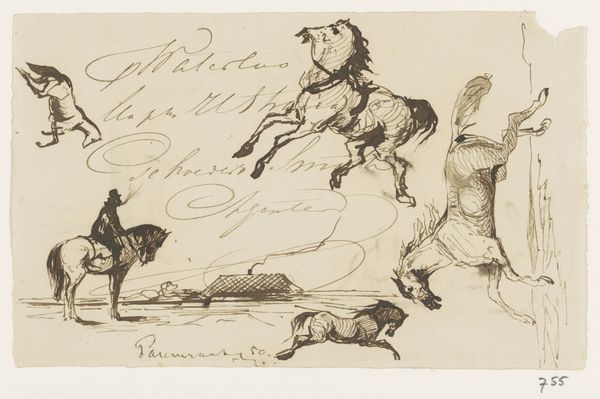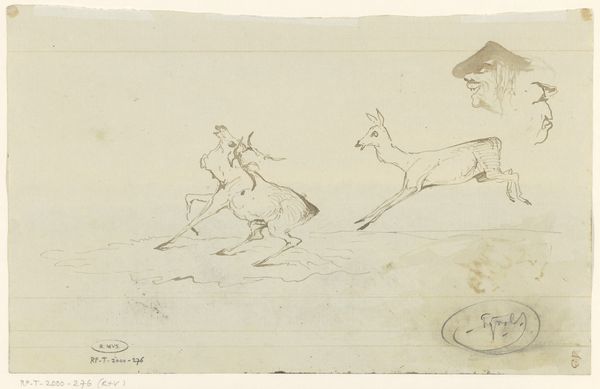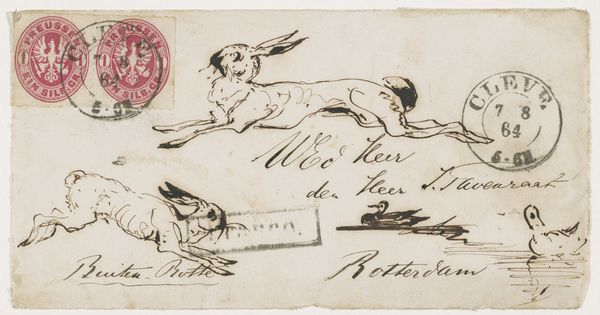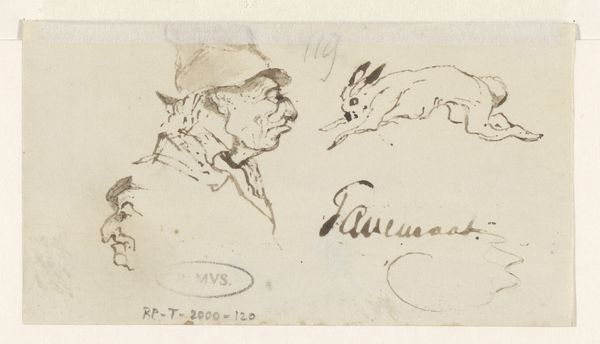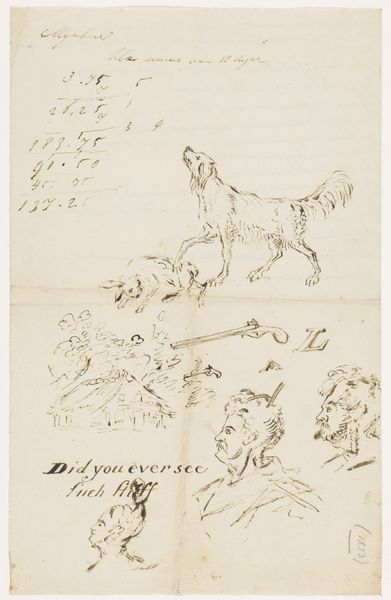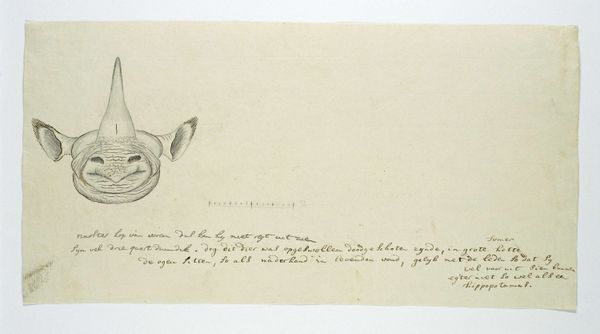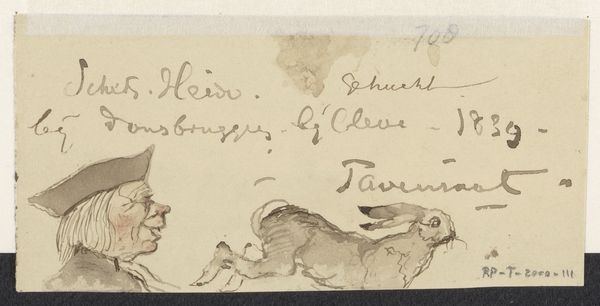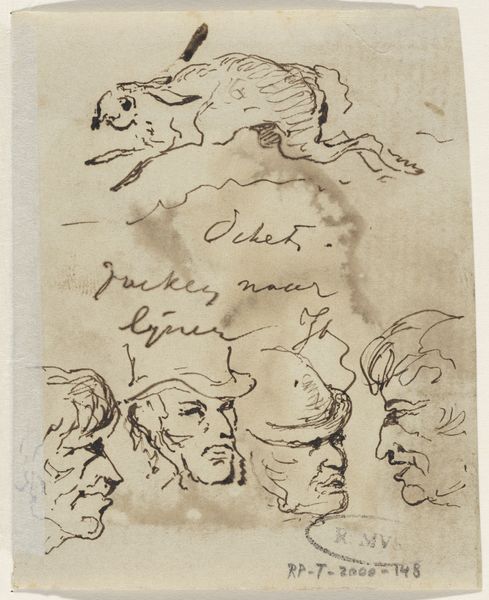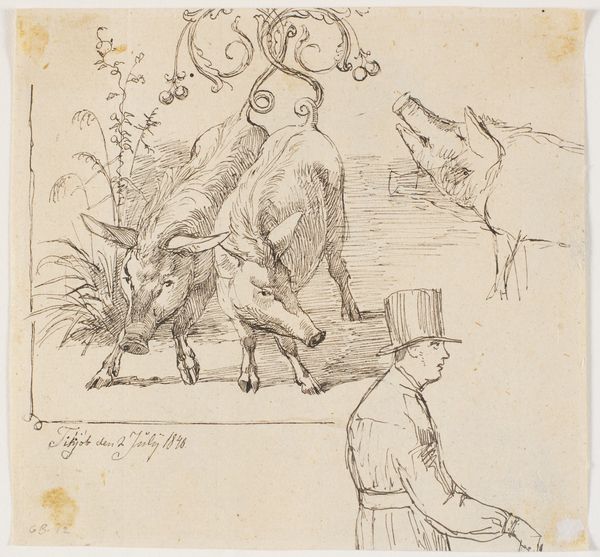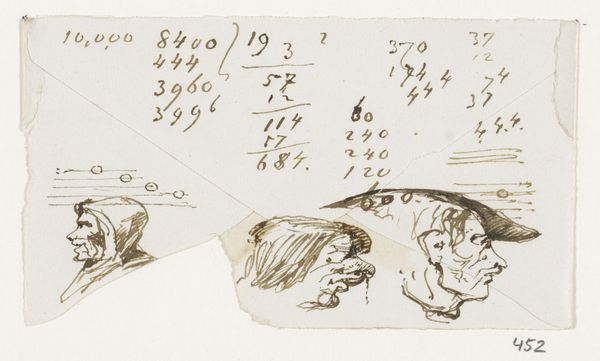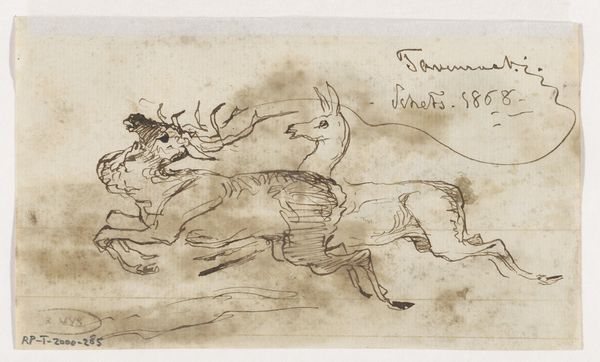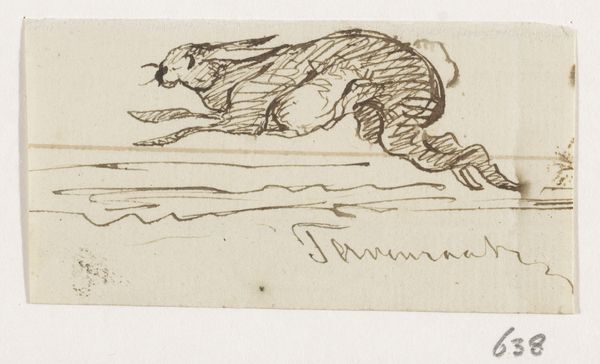
Dimensions: height 69 mm, width 135 mm
Copyright: Rijks Museum: Open Domain
Editor: Here we have "Two Heads and Two Hares" by Johannes Tavenraat, a pencil drawing on paper created sometime between 1840 and 1880. It strikes me as an informal sketch, almost a doodle page. What compositional elements stand out to you? Curator: Note the deliberate deployment of line and form, irrespective of subject. See how the artist contrasts the more fully rendered hares with the mere suggestion of human countenances above. The proportional relationships within each grouping present internal geometries and rhythmic qualities. Editor: So you're less concerned with what the figures *are* and more with how they are *depicted*? I confess I’m drawn to try to interpret what the artist might have been thinking. Curator: Such inquiries are extrinsic to the artwork. Consider instead the intrinsic formal properties. Observe the stark contrast of light and shadow. Note the use of hatching and cross-hatching to build depth. It is an orchestration of dark and light tones and mark making, and a display of tonal range within a restricted palette. Editor: It is interesting how you phrase that. I keep wanting to link it to Romanticism because of the animal theme. I suppose it is a leap. Curator: Perhaps. The pencil strokes and composition generate meaning independent of historical associations, as their configuration creates rhythm. Observe how the upward-pointing ears are opposed by the forward motion of the hares' bodies. Editor: I see. I was approaching it looking for narrative and context but appreciate seeing this emphasis on the visual language itself. Curator: Exactly. Focus on the structure and relationships, and the artwork reveals itself on its own terms. Editor: Thank you, that clarifies a whole other way to approach art, to see it primarily as a structured arrangement.
Comments
No comments
Be the first to comment and join the conversation on the ultimate creative platform.
